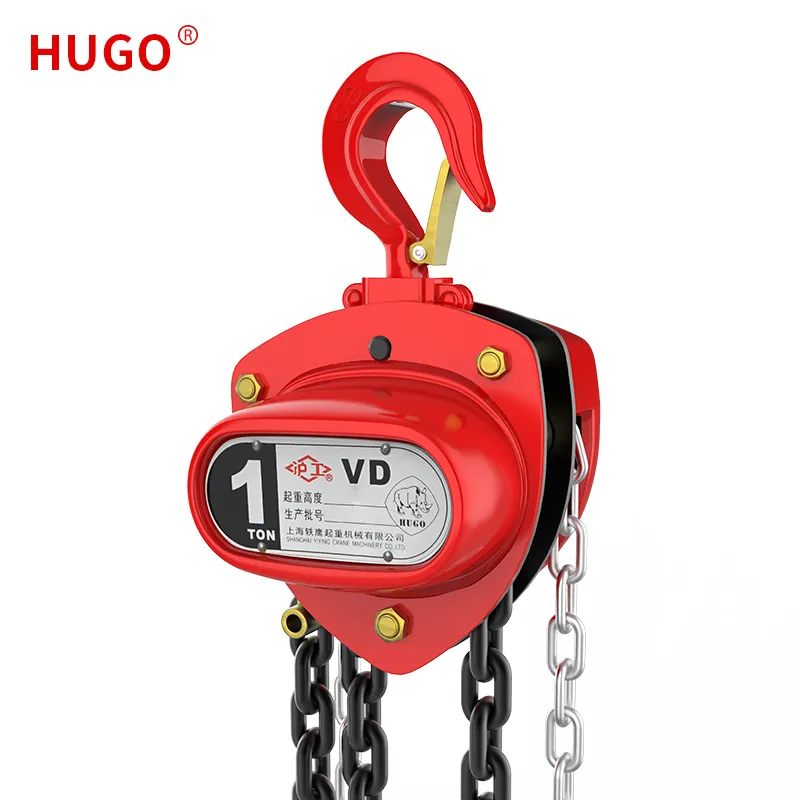
- English
- Español
- Português
- русский
- Français
- 日本語
- Deutsch
- tiếng Việt
- Italiano
- Nederlands
- ภาษาไทย
- Polski
- 한국어
- Svenska
- magyar
- Malay
- বাংলা ভাষার
- Dansk
- Suomi
- हिन्दी
- Pilipino
- Türkçe
- Gaeilge
- العربية
- Indonesia
- Norsk
- تمل
- český
- ελληνικά
- український
- Javanese
- فارسی
- தமிழ்
- తెలుగు
- नेपाली
- Burmese
- български
- ລາວ
- Latine
- Қазақша
- Euskal
- Azərbaycan
- Slovenský jazyk
- Македонски
- Lietuvos
- Eesti Keel
- Română
- Slovenski
- मराठी
- Srpski језик
What is the weakest part of a chain hoist?
2024-10-28
Chain hoists are essential tools in various industries, enabling the lifting and moving of heavy loads with ease. However, like any mechanical equipment, they have vulnerabilities. Understanding the weakest parts of a chain hoist is crucial for ensuring safety, optimizing performance, and extending the lifespan of the equipment. In this blog, we’ll explore the common weak points of chain hoists and how to mitigate potential risks.
1. The Chain
Arguably the weakest link in a chain hoist is the chain itself. Over time, chains can experience wear and tear due to friction, corrosion, and fatigue. Here are some key considerations regarding chains:
- Wear and Tear: Frequent use leads to gradual wear, making the chain more susceptible to failure. Regular inspection for signs of elongation, rust, or deformation is essential.
- Corrosion: Exposure to harsh environments can cause chains to rust, compromising their strength. Using corrosion-resistant materials or applying protective coatings can help.
- Overloading: Exceeding the rated load capacity can lead to chain failure. Operators must always adhere to the manufacturer's specifications.
2. Hooks
Hooks are another critical component that can become weak over time. They are designed to secure loads, but various factors can lead to failure:
- Bending or Deformation: Overloading or improper use can bend hooks, making them less effective and potentially dangerous.
- Cracks: Inspect hooks regularly for cracks or wear. If damage is detected, replacing the hook is essential.
3. Gear Mechanism
The gear mechanism within a chain hoist plays a vital role in its operation. However, it can also be a weak point:
- Worn Gears: Gears can wear down over time, leading to decreased lifting efficiency and increased friction. Regular lubrication and inspection can help maintain gear integrity.
- Improper Alignment: Misalignment can cause premature wear on gears. Ensuring proper alignment during installation and maintenance is crucial.

4. Brake System
The brake system is a safety feature that prevents uncontrolled descent of the load. If it fails, the consequences can be severe:
- Wear and Tear: Brake components can wear out over time, reducing their effectiveness. Regularly checking the brake system for signs of wear is essential.
- Fluid Leaks (for hydraulic systems): Any leaks in hydraulic systems can lead to brake failure. Regular inspection and maintenance are crucial to ensure brake reliability.
5. Body Structure
The structural integrity of the hoist itself is fundamental to its performance:
- Frame Weakness: Over time, the frame can suffer from fatigue, especially if the hoist is regularly subjected to heavy loads or impacts. Inspecting for cracks or deformities in the body structure is crucial.
- Corrosion: Just like the chain, the hoist body can corrode, especially in harsh environments. Regular cleaning and maintenance can mitigate this risk.
Conclusion
Understanding the weakest parts of a chain hoist is essential for safe and effective operation. Regular inspections, proper maintenance, and adherence to load limits are crucial practices that can help mitigate risks associated with these vulnerable components. By prioritizing maintenance and safety, you can extend the lifespan of your chain hoist and ensure safe lifting operations. Always consult the manufacturer’s guidelines and consider professional inspections to maintain optimal performance and safety standards.
As a professional China Chain Hoist manufacturers and suppliers, we provide customers with comprehensive project management services. Welcome to inquiry us at SALES3@YIYINGGROUP.COM.


